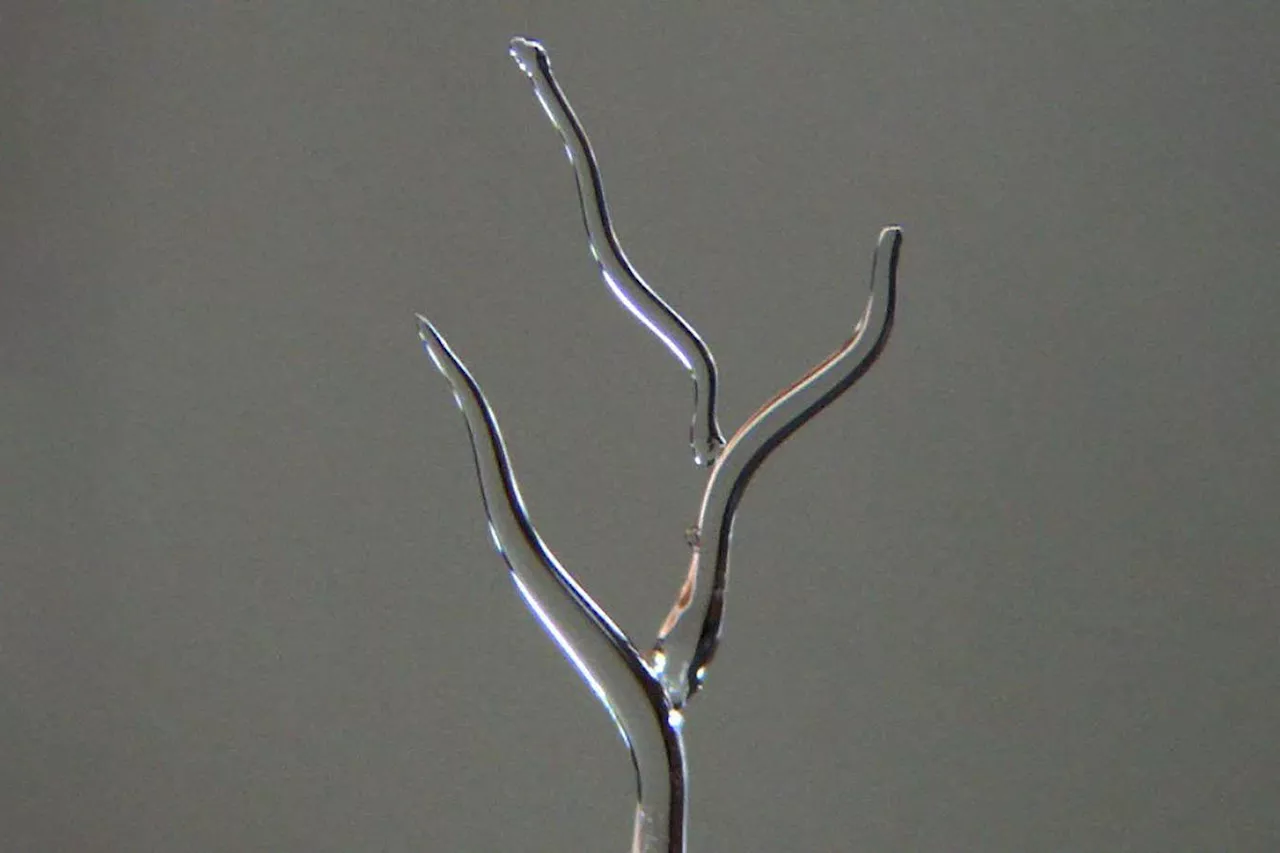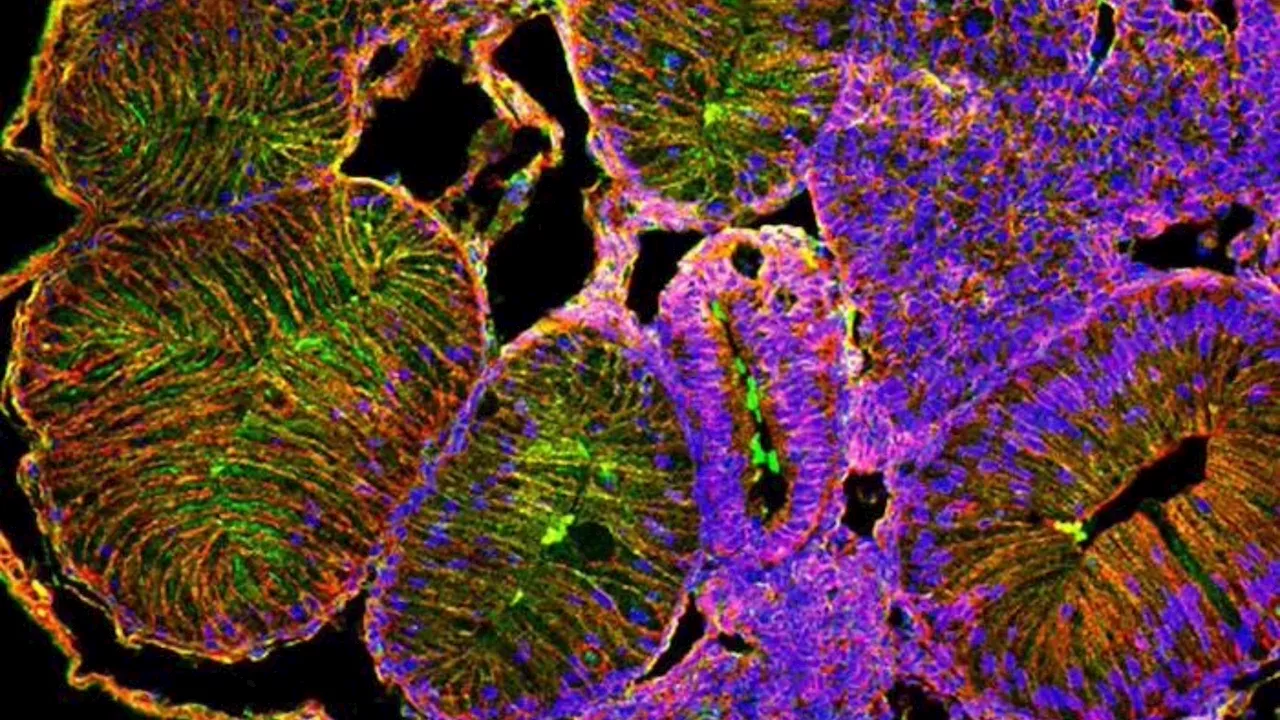With human retinas grown in a petri dish, researchers discovered how an offshoot of vitamin A generates the specialized cells that enable people to see millions of colors, an ability that dogs, cats, and other mammals do not possess.
The findings increase understanding of color blindness, age-related vision loss, and other diseases linked to photoreceptor cells. They also demonstrate how genes instruct the human retina to make specific color-sensing cells, a process scientists thought was controlled by thyroid hormones.
Scientists for decades thought red cones formed through a coin toss mechanism where the cells haphazardly commit to sensing green or red wavelengths -- and research from Johnston's team recently hinted that the process could be controlled by thyroid hormone levels. Instead, the new research suggests red cones materialize through a specific sequence of events orchestrated by retinoic acid within the eye.
Green and red cone cells are remarkably similar except for a protein called opsin, which detects light and tells the brain what colors people see. Different opsins determine whether a cone will become a green or a red sensor, though the genes of each sensor remain 96% identical. With a breakthrough technique that spotted those subtle genetic differences in the organoids, the team tracked cone ratio changes over 200 days.
Scientists still don't fully understand how the ratio of green and red cones can vary so greatly without affecting someone's vision. If these types of cells determined the length of a human arm, the different ratios would produce"amazingly different" arm lengths, Johnston said. Other Johns Hopkins authors include: Kiara C. Eldred, Boris Brenerman, Katarzyna A. Hussey, Joanna F. D. Hagen, Rajiv C. McCoy, Michael E. G. Sauria, and James Taylor; as well as James A. Kuchenbecker, Thomas Reh, Ian Glass, Maureen Neitz, Jay Neitz of the University of Washington.Sarah E. Hadyniak, Joanna F. D. Hagen, Kiara C. Eldred, Boris Brenerman, Katarzyna A. Hussey, Rajiv C. McCoy, Michael E. G. Sauria, James A.
United States Latest News, United States Headlines
Similar News:You can also read news stories similar to this one that we have collected from other news sources.
 Blood vessels made with 3D-printed ice could improve lab-grown organsMoulds of an organ's delicate blood vessel network can be made with 3D-printed ice, helping to overcome the intricacies of growing transplant organs in a lab
Blood vessels made with 3D-printed ice could improve lab-grown organsMoulds of an organ's delicate blood vessel network can be made with 3D-printed ice, helping to overcome the intricacies of growing transplant organs in a lab
Read more »
 The Murky Campaign to Discredit Lab-Grown MeatA new ad campaign is targeting the cultivated meat industry on TV and online. Industry supporters criticize it as unscientific.
The Murky Campaign to Discredit Lab-Grown MeatA new ad campaign is targeting the cultivated meat industry on TV and online. Industry supporters criticize it as unscientific.
Read more »
 Leading Lab-Grown Meat Company Upside Foods Just Paused a Major ExpansionUpside Foods is putting plans for its Illinois-based cultivated meat factory on hold and laying off staff to focus on its existing plant.
Leading Lab-Grown Meat Company Upside Foods Just Paused a Major ExpansionUpside Foods is putting plans for its Illinois-based cultivated meat factory on hold and laying off staff to focus on its existing plant.
Read more »
 Scientists swear their lab-grown ‘beef rice’ tastes ‘pleasant’Andrew Paul is Popular Science‘s staff writer covering tech news. Previously, he was a regular contributor to The A.V. Club and Input, and has had recent work featured by Rolling Stone, Fangoria, GQ, Slate, NBC, as well as McSweeney’s Internet Tendency. He lives outside Indianapolis.
Scientists swear their lab-grown ‘beef rice’ tastes ‘pleasant’Andrew Paul is Popular Science‘s staff writer covering tech news. Previously, he was a regular contributor to The A.V. Club and Input, and has had recent work featured by Rolling Stone, Fangoria, GQ, Slate, NBC, as well as McSweeney’s Internet Tendency. He lives outside Indianapolis.
Read more »
 You Can’t Buy Lab-Grown Meat Even If You Wanted ToAll of the restaurants that once sold cultivated meat have stopped offering it, leaving the industry in a strange limbo.
You Can’t Buy Lab-Grown Meat Even If You Wanted ToAll of the restaurants that once sold cultivated meat have stopped offering it, leaving the industry in a strange limbo.
Read more »
 Gut twist: Lab-grown frog embryos unlock mystery of human birth defectInteresting Engineering is a cutting edge, leading community designed for all lovers of engineering, technology and science.
Gut twist: Lab-grown frog embryos unlock mystery of human birth defectInteresting Engineering is a cutting edge, leading community designed for all lovers of engineering, technology and science.
Read more »
